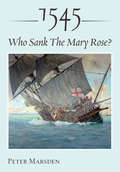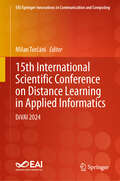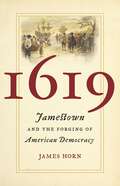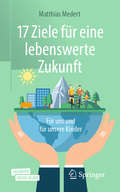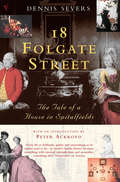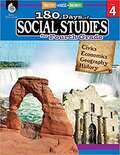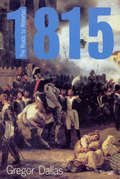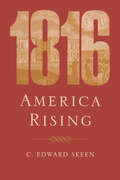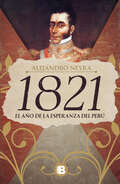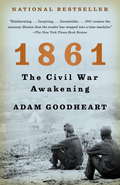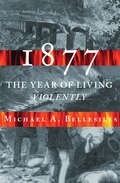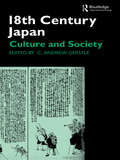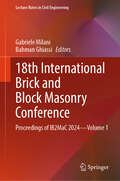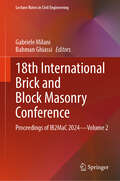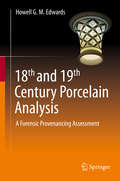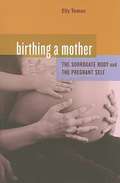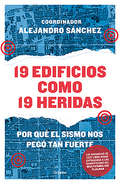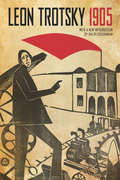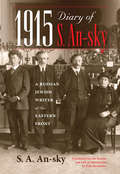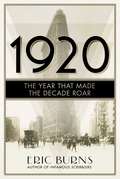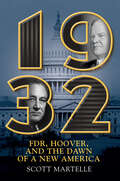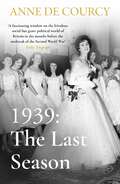- Table View
- List View
1545: Who Sank The Mary Rose?
by Peter MarsdenA &“wonderful&” account of the raising of a sixteenth-century warship, and answers to the long-running mysteries surrounding her loss (Naval Historical Foundation). In 1982, a Tudor Navy warship was raised in a major salvage project that represented a landmark in maritime archaeology. The Mary Rose had spent over four centuries underwater, and contained the skeletons of numerous sailors as well as many fascinating artifacts of the time. She is more than a relic, however. She has a story to tell, and her sinking in the Solent while under attack by the French, and the reasons for it, have intrigued historians for generations. With the benefit of access to her remains, archaeologists have been able to slowly unravel the mystery of her foundering on a calm summer&’s day in July 1545. This new book by a leading expert on the Mary Rose contains much information that is published for the first time. It provides the first full account of the battle in which Henry VIII&’s warship was sunk, and tells the stories of the English and French admirals. It examines the design and construction of the ship and how she was used, and finally makes clear who was responsible for the loss of the Mary Rose, after describing what happened onboard, deck by deck, in her last moments afloat. Includes photographs
15th International Scientific Conference on Distance Learning in Applied Informatics: DiVAI 2024 (EAI/Springer Innovations in Communication and Computing)
by Milan TurčániThe book presents the proceedings of the 15th DIVAI (Distance Learning in Applied Informatics) Conference, an international scientific event that focuses on the field of distance learning in applied informatics. The 15th edition of the conference took place from September 30 to October 2, 2024. The conference is held under the patronage of the Dean of the Faculty of Natural Sciences and Informatics, Constantine the Philosopher University in Nitra. The proceedings are relevant to researchers, academics, professionals, and students in distance learning and applied informatics.
1619: Jamestown and the Forging of American Democracy (Published By The Omohundro Institute Of Early American History And Culture And The University Of North Carolina Press Ser.)
by James HornAn extraordinary year in which American democracy and American slavery emerged hand in handAlong the banks of the James River, Virginia, during an oppressively hot spell in the middle of summer 1619, two events occurred within a few weeks of each other that would profoundly shape the course of history. In the newly built church at Jamestown, the General Assembly--the first gathering of a representative governing body in America--came together. A few weeks later, a battered privateer entered the Chesapeake Bay carrying the first African slaves to land on mainland English America.In 1619, historian James Horn sheds new light on the year that gave birth to the great paradox of our nation: slavery in the midst of freedom. This portentous year marked both the origin of the most important political development in American history, the rise of democracy, and the emergence of what would in time become one of the nation's greatest challenges: the corrosive legacy of racial inequality that has afflicted America since its beginning.
17 Ziele für eine lebenswerte Zukunft: Für uns und für unsere Kinder
by Matthias MedertVielleicht machst auch du dir Sorgen darüber, wohin die vielen ökologischen und sozialen Probleme führen werden, von welcher Art und Ausmaß die Konsequenzen sein können und wie diese das Leben von Menschen betreffen werden? Dann könnte dieses Buch interessant für Dich sein: Es beschreibt anhand der 17 UN-Nachhaltigkeitsziele eine Vision für eine lebenswerte Zukunft. Du erfährst kurz und verständlich zu jedem der Ziele konkrete Hintergründe, Zusammenhänge und Herausforderungen, die es auf dem Weg dorthin noch zu meistern gilt. Es macht die Themen greifbar - sowohl global als auch bezogen auf Deutschland. Gleichzeitig liefert Dir das Buch Anregungen, wie Du selbst dazu beitragen kannst, die großen Probleme der Menschheit zu lösen: Klimawandel, Energie, Plastikmüll, Artenvielfalt, Umweltschutz, Hunger, Armut, etc.Zusammen können wir es schaffen, die 17 Ziele umzusetzen, indem wir sie mit konkreten Inhalten füllen. Falls uns das gelingt fragen unsere Kinder vielleicht eines Tages: „Wie habt ihr damals die Erde gerettet und die Menschheit in das Zeitalter der sozialen Gerechtigkeit geführt?“
1787: A Novel
by Joan AndersonAs James Madison's aide during the 1787 Constitutional Convention in Philadelphia, young Jared Mifflin experiences a summer filled with adventure, intrigue, and romance. The story of a teenager who became James Madison's aide during the 1787 Constitutional Convention in Philadelphia.
18 Folgate Street: The Life of a House in Spitalfields
by Dennis SeversGrowing up in California, Dennis Severs fell in love with the England he saw in old black and white movies. At seventeen he came to London, looking for a home with a heart. In 1979 he found one, a run-down silk-weaver's house in Spitalfields, and over the next twenty years he transformed it into an enchanted time-capsule, transporting us back to the eighteenth century. From cellar to roof, he filled 18 Folgate Street with original objects and furniture, found in the local markets, lit by candles and chandeliers. More than that, he invented a family to live here, the Jervis family, Huguenot weavers who fled persecution in France in 1688, and bought the house in 1724. Sounds and scents bring their world to life, always just out of sight - floorboards creak, fires crackle, a kettle hisses on the hob. Visitors step through the frame of time, like entering an old master painting. As we move from room to room on a tour you will never forget, we follow the Jervis story from the days of the Georges and the Regency to harsher Victorian times - and even to the attic room of Scrooge himself.
180 Days Of Social Studies For Fourth Grade: Civics, Economics, Geography, History
by Shell Education Staff Margaret WilliamsonSupplement your social studies curriculum with 180 days of daily practice! This essential classroom resource provides teachers with weekly social studies units that build students' content-area literacy, and are easy to incorporate into the classroom. Students will analyze primary sources, answer text-dependent questions, and improve their grade-level social studies knowledge. Each week covers a particular topic within one of the four social studies disciplines: history, economics, civics, and geography. Aligned to the National Council for the Social Studies (NCSS) and state standards, this resource includes digital materials.
1815: The Roads to Waterloo
by Gregor DallasThe seventeen months from April 1814 to August 1815 were an extraordinary period in European history; a period which saw two sieges of Paris, a complete revision of Europe's political frontiers, an international Congress set up in Vienna, civil war in Italy and international war in Belgium.Gregor Dallas tells the story of these days through the perspectives of three very different European cities: the great metropolis of London, post-revolutionary Paris and baroque Vienna. The writing is almost cinematic in its power to evoke and bring to life the Europe of Tolstoy: the ebb and flow of power, of armies and of peoples across Europe's northern plains. Working essentially from primary sources, Dallas is as interested in the weather conditions before battle as in the way cartoonists reacted to court intrigues and fashions.It is also Europe seen through the eyes of its central players: Talleyrand, who has served nearly every French regime since the Revolution of 1789; Metternich, who devises new plans for a 'Germany' that does not yet exist and for a 'Europe' that remains devided; Wellington, who reveals himself a diplomat as well as a soldier; Tsar Alexander, an idealist seeking to impose a uniform plan for all Europe; and 'Boney' himself, who has his own ideal of Europe and, though banished to Elba, does not abandon his dream to realise it.
1816: America Rising
by C. Edward Skeen“Makes the case for 1816 as an important year in the development of the American nation. Well-written and -researched . . . recommended.”—Library JournalThe year 1816 found America on the cusp of political, social, cultural, and economic modernity. Celebrating its fortieth year of independence, the country’s sense of self was maturing. Americans, who had emerged from the War of 1812 with their political systems intact, embraced new opportunities. For the first time, citizens viewed themselves not as members of a loose coalition of states but as part of a larger union. This optimism was colored, however, by bizarre weather. Periods of extreme cold and severe drought swept the northern states and the upper south throughout 1816, which was sometimes referred to as “The Year Without a Summer.” In 1816 , historian C. Edward Skeen illuminates this unique year of national transition. Politically, the “era of good feelings” allowed Congress to devise programs that fostered prosperity. Social reform movements flourished. This election year found the Federalist party in its death throes, seeking cooperation with the nationalistic forces of the Republican party. Movement west, maturation of political parties, and increasingly contentious debates over slavery characterized this pivotal year. 1816 marked a watershed in American history. This provocative book vividly highlights the stresses that threatened to pull the nation apart and the bonds that ultimately held it together.“Reveals a sense of the fragility of the American experiment.” —Boston Globe“Skeen narrates the major events of [the era’s] opening 12 months with great skill . . . with clarity and verve.” —Publisher’s Weekly“A very impressive exposition of political culture in the early republic.” —Andrew Burstein, author of Jefferson’s Secrets
1821: El año de la esperanza del Perú
by Alejandro NeyraEn 1821, Alejandro Neyra relata los episodios fundamentales de aquel año decisivo que cambió el rumbo de nuestra historia. ¿Cómo se originó la gesta por la Independencia del Perú? ¿Quiénes fueron los personajes que diseñaron las estrategias y las negociaciones para acabar con el virreinato e instaurar la República? En 1821, Alejandro Neyra relata los episodios fundamentales de aquel año decisivo que cambió el rumbo de nuestra historia. Este libro narra las comunicaciones y los encuentros entre el marqués de Torre Tagle y don José de San Martín y sus huestes para formar una alianza con la única misión de luchar por la libertad. Conspiraciones, acuerdos fallidos y amistades sólidas se encuentran en las páginas de este libro. Neyra da vida a los protagonistas de esta historia en cuyos diálogos descubrimos un profundo deseo de justicia y de cambio en la vida social, marcada por el temor de hallarse entre dos bandos y la necesidad de escoger uno de ellos. En 1821 destaca la participación de Rosa Campusano, Carmen Guzmán, Mariana Echevarría y Basil Hall, entre otros personajes que contribuyeron a la Independencia y a los que, cumplido el Bicentenario, este libro busca dar justo homenaje. «1821 nos muestra cómo se vivió la Independencia en el norte del Perú y en Lima, llena de color la historia que conocemos y nos ayuda a imaginar lo que dijeron y vivieron sus protagonistas». Natalia Sobrevilla Perea
1861
by Adam GoodheartAs the United States marks the 150th anniversary of our defining national drama, 1861 presents a gripping and original account of how the Civil War began.1861 is an epic of courage and heroism beyond the battlefields. Early in that fateful year, a second American revolution unfolded, inspiring a new generation to reject their parents' faith in compromise and appeasement, to do the unthinkable in the name of an ideal. It set Abraham Lincoln on the path to greatness and millions of slaves on the road to freedom.The book introduces us to a heretofore little-known cast of Civil War heroes--among them an acrobatic militia colonel, an explorer's wife, an idealistic band of German immigrants, a regiment of New York City firemen, a community of Virginia slaves, and a young college professor who would one day become president. Adam Goodheart takes us from the corridors of the White House to the slums of Manhattan, from the mouth of the Chesapeake to the deserts of Nevada, from Boston Common to Alcatraz Island, vividly evoking the Union at this moment of ultimate crisis and decision.From the Hardcover edition.
1877: America's Year of Living Violently
by Michael A. Bellesiles&“[A] powerful examination of a nation trying to make sense of the complex changes and challenges of the post–Civil War era.&” —Carol Berkin, author of A Brilliant Solution: Inventing the American Constitution In 1877—a decade after the Civil War—not only was the United States gripped by a deep depression, but the country was also in the throes of nearly unimaginable violence and upheaval, marking the end of the brief period known as Reconstruction and reestablishing white rule across the South. In the wake of the contested presidential election of 1876, white supremacist mobs swept across the South, killing and driving out the last of the Reconstruction state governments. A strike involving millions of railroad workers turned violent as it spread from coast to coast, and for a moment seemed close to toppling the nation&’s economic structure. Celebrated historian Michael A. Bellesiles reveals that the fires of that fated year also fueled a hothouse of cultural and intellectual innovation. He relates the story of 1877 not just through dramatic events, but also through the lives of famous and little-known Americans alike. &“A superb and troubling book about the soul of Modern America.&” —William Deverell, director of the Huntington-USC Institute on California and the West &“A bold, insightful book, richly researched, and fast paced . . . Bellesiles vividly portrays on a single canvas the violent confrontations in 1877.&” —Alfred F. Young, coeditor of Revolutionary Founders: Rebels, Radicals, and Reformers in the Making of the Nation &“[A] wonderful read that is sure to appeal to those interested in the challenges of creating a post–Civil War society.&” —Choice
18th Century Japan: Culture and Society
by C. Andrew GerstleThe period of Japanese history before the advent of industrialisation and modernism is of tremendous interest. The essays in this collection show a fascination with the social context behind the development of aesthetics, drama, language, art and philosophy, whether it be the world of the pleasure quarters or the Shogun's court.
18th International Brick and Block Masonry Conference: Proceedings of IB2MaC 2024—Volume 1 (Lecture Notes in Civil Engineering #613)
by Gabriele Milani Bahman GhiassiThis book highlights the latest advances, innovations, and applications in the field of masonry structures and constructions, as presented by leading international researchers at the 18th International Brick and Block Masonry Conference (IB2MaC), held in Birmingham, UK, on July 21–24, 2024. Conference topics include architecture with masonry, analysis of masonry structures, bricks and blocks, mortars, repair, strengthening and retrofitting, conservation of historical heritage, new construction techniques, seismic engineering, durability and deterioration of materials, energy efficiency, AI, and masonry. The contributions, which were selected by means of a rigorous international peer-review process, present a wealth of exciting ideas that will open novel research directions and foster multidisciplinary collaboration among different specialists.
18th International Brick and Block Masonry Conference: Proceedings of IB2MaC 2024—Volume 2 (Lecture Notes in Civil Engineering #614)
by Gabriele Milani Bahman GhiassiThis book highlights the latest advances, innovations, and applications in the field of masonry structures and constructions, as presented by leading international researchers at the 18th International Brick and Block Masonry Conference (IB2MaC), held in Birmingham, UK, on July 21–24, 2024. Conference topics include architecture with masonry, analysis of masonry structures, bricks and blocks, mortars, repair, strengthening and retrofitting, conservation of historical heritage, new construction techniques, seismic engineering, durability and deterioration of materials, energy efficiency, AI, and masonry. The contributions, which were selected by means of a rigorous international peer-review process, present a wealth of exciting ideas that will open novel research directions and foster multidisciplinary collaboration among different specialists.
18th and 19th Century Porcelain Analysis: A Forensic Provenancing Assessment
by Howell G. EdwardsThis book addresses the contributions made by analytical chemistry to the characterisation of 18th and early 19th Century English and Welsh porcelains commencing with the earliest reports of Sir Arthur Church and of Herbert Eccles and Bernard Rackham using chemical digestion techniques and concluding with the most recent instrumental experiments, which together span more than a hundred years of study. From the earliest experiments which required necessarily the sacrifice of significant portions of each specimen, which may already have been damaged , to the latest experiments which needed only microsampling or the non-destructive interrogation of valuable perfect specimens a comprehensive survey is undertaken of more than twenty manufactories of quality porcelains. The correlation is made between the quantitative elemental oxide determinations of the scanning electron microscopic diffraction and Xray fluorescence data and the qualitative molecular spectroscopic Raman data to demonstrate their complementarity and use in the holistic forensic assessment of the origin of the fired procelains ; this will form the groundwork for the adoption of analytical techniques for the attribution of unknown or questionable procelains to their potential source factories . The book will also examine the perception of what constitutes a porcelain and its definitions and examines the assignment of porcelains to types which currently employs the definitions of hard paste , soft paste , hybrid , magnesian and bone china from the conclusions derived from the analytical data and a consideration of the raw materials employed in their manufacturing processes. During the discussion of this analytical evidence several themes and protocols have been established for its utilisation in the potential identification of porcelains and several case studies undertaken for this purpose are cited. The book will be of interest to analytical scientists , to museum ceramics curators and to ceramics historians.
19 Steps Up the Mountain
by Joseph P. BlankIt is the story of Dorothy and Bob DeBolt, who could not resist the appeal of children no one else wanted. Children of different races and nationalities, children with seemingly hopeless physical handicaps and bleak futures. It is the story of the children themselves, each learning what it meant to be loved, and what it was to overcome the most heart rending obstacles. Two parents. Nineteen children. And the single most unforgettable story that will ever leave you with mist in your eyes and joy in your heart. "A tonic for cynical and disheartened readers...This book tells clearly what it takes to be successful parents, especially when J.R.-a blind paraplegic-conquers his fear and makes it up the 19-step staircase 'mountain' alone"
19 edificios como 19 heridas: Por qué el sismo nos pegó tan fuerte
by Alejandro SánchezEl 19 de septiembre de 2017 un terremoto azotó México. Murieron 369 personas. Pero no las mató el sismo. Los responsables fueron la corrupción, la impunidad, la dejadez, el olvido e incluso la falta de cultura cívica. A un año del desastre, esta obra investiga qué salió mal en 19 de los edificios más dañados por el temblor. ¿Por qué hubo tantos muertos 32 años después del terremoto de 1985? El libro, así, pinta cuáles son los problemas que resquebrajaron México... y alerta: si no se solucionan, volverá a ocurrir una tragedia similar. Reportajes de: Óscar Alarcón - Hugo Corzo Zanabria - Silvia Garduño Francisco Goldman - Édgar Ledesma Gasca - Albinson Linares Francisco Nieto - Ernesto Núñez Albarrán - Georgina Olson Jiménez Peniley Ramírez - Paris Alejandro Salazar - Nantzin Saldaña Neldy San Martín # Alejandro Sánchez - Laura Sánchez Ley Claudia Solera - Laura Toribio - Daniel Venegas. Las ganancias de este libro serán entregadas a los damnificados del Multifamiliar Tlalpan.
1905
by Leon TrotskyLeon Trotsky's 1905-despite long being out of print-has remained the central point of reference for those looking to understand the rising of workers, peasants, and soldiers that nearly unseated the Tsar in 1905. Trotsky's elegant, beautifully written account draws on his experience as a key leader of the revolution.
1915 Diary of S. An-sky: A Russian Jewish Writer at the Eastern Front (Encounters: Explorations in Folklore and Ethnomusicology)
by S. A. An-SkyThe WWI diary of the Russian Jewish activist and author of The Dybbuk presents &“an unforgettable portrait of life, culture, and destruction&” (Eugene Avrutin, author of Jews and the Imperial State). By the outbreak of World War I, S. An-sky was a well-known writer, a longtime revolutionary, and an ethnographer who pioneered the collection of Jewish folklore in Russia's Pale of Settlement. In 1915, An-sky took on the assignment of providing aid and relief to Jewish civilians trapped under Russian military occupation in Galicia. As he made his way through the shtetls there, close to the Austrian frontlines, he kept a diary of his encounters and impressions. In his diary, An-sky describes conversations with wounded soldiers in hospitals, fellow Russian and Jewish aid workers, and Jewish civilians living on the Eastern Front. He recorded the brutality and violence against the civilian population, the complexities of interethnic relations, the practices and limitations of philanthropy and medical care, Russification policies, and antisemitism. In the late 1910s, An-sky used his diaries as raw material for a lengthy memoir in Yiddish, published under the title The Destruction of Galicia. Although most of An-sky&’s original diaries were lost, two fragments are preserved in the Russian State Archive of Literature and Art. Translated and annotated here by Polly Zavadivker, these fragments convey An-sky's vivid perceptions and enlightening insights.
1919, The Year of Racial Violence
by David F. Krugler1919, The Year of Racial Violence recounts African Americans' brave stand against a cascade of mob attacks in the United States after World War I. The emerging New Negro identity, which prized unflinching resistance to second-class citizenship, further inspired veterans and their fellow black citizens. In city after city - Washington, DC; Chicago; Charleston; and elsewhere - black men and women took up arms to repel mobs that used lynching, assaults, and other forms of violence to protect white supremacy; yet, authorities blamed blacks for the violence, leading to mass arrests and misleading news coverage. Refusing to yield, African Americans sought accuracy and fairness in the courts of public opinion and the law. This is the first account of this three-front fight - in the streets, in the press, and in the courts - against mob violence during one of the worst years of racial conflict in US history.
1920: The Year that Made the Decade Roar
by Eric BurnsOne of the most dynamic eras in American history--the 1920s--began with this watershed year that would set the tone for the century to follow. "The Roaring Twenties" is the only decade in American history with a widely applied nickname, and our collective fascination with this era continues. But how did this surge of innovation and cultural milestones emerge out of the ashes of The Great War? No one has yet written a book about the decade's beginning. Acclaimed author Eric Burns investigates the year of 1920, which was not only a crucial twelve-month period of its own, but one that foretold the future, foreshadowing the rest of the 20th century and the early years of the 21st, whether it was Sacco and Vanzetti or the stock market crash that brought this era to a close. Burns sets the record straight about this most misunderstood and iconic of periods. Despite being the first full year of armistice, 1920 was not, in fact, a peaceful time--it contained the greatest act of terrorism in American history to date. And while 1920 is thought of as starting a prosperous era, for most people, life had never been more unaffordable. Meanwhile, African Americans were putting their stamp on culture and though people today imagine the frivolous image of the flapper dancing the night away, the truth was that a new kind of power had been bestowed on women, and it had nothing to do with the dance floor. . . From prohibition to immigration, the birth of jazz, the rise of expatriate literature, and the original Ponzi scheme, 1920 was truly a year like no other.
1932: FDR, Hoover, and the Dawn of a New America
by Scott MartelleA fascinating behind-the-scenes look at a year in American history that still resonates today, 1932: FDR, Hoover, and the Dawn of a New America tells the story of a battered nation fighting for its own future amid the depths of the Great Depression. At the start of 1932, the nation&’s worst economic crisis has left one-in-four workers without a job, countless families facing eviction, banks shutting down as desperate depositors withdraw their savings, and growing social and political unrest from urban centers to the traditionally conservative rural heart of the country. Amid this turmoil, a political decision looms that will determine the course of the nation. It is a choice between two men with very diferent visions of America: Incumbent Republican Herbert Hoover with his dogmatic embrace of small government and a largely unfettered free market, and New York&’s Democratic Governor Franklin Delano Roosevelt and his belief that the path out of the economic crisis requires government intervention in the economy and a national sense of shared purpose. Now veteran journalist Scott Martelle provides a gripping narrative retelling of that vitally significant year as social and political systems struggled under the weight of the devastating Dust Bowl, economic woes, rising political protests, and growing demand for the repeal of Prohibition. That November, voters overwhelmingly rejected decades of Republican rule and backed Roosevelt and his promise to redefine the role of the federal government while putting the needs of the people ahead of the wishes of the wealthy. Deftly told, this illuminating work spotlights parallel events from that pivotal year and brings to life figures who made headlines in their time but have been largly forgotten today. Ultimately, it is the story of a nation that, with the help of a leader determined to unite and inspire, took giant steps toward a new America.
1939: The Last Season
by Anne de CourcyA wonderful portrait of British upper-class life in the Season of 1939 - the last before the Second World War.The Season of 1939 brought all those 'in Society' to London. The young debutante daughters of the upper classes were presented to the King and Queen to mark their acceptance into the new adult world of their parents. They sparkled their way through a succession of balls and parties and sporting events.The Season brought together influential people not only from Society but also from Government at the various events of the social calendar. Prime Minister Neville Chamberlain chaperoned his debutante niece to weekend house parties; Lord Halifax, the Foreign Secretary, lunched with the Headmaster of Eton; Cabinet Ministers encountered foreign Ambassadors at balls in the houses of the great hostesses. As the hot summer drew on, the newspapers filled with ever more ominous reports of the relentless progress towards war. There was nothing to do but wait - and dance. The last season of peace was nearly over.
1939: The Last Season
by Anne de CourcyA wonderful portrait of British upper-class life in the Season of 1939 - the last before the Second World War.The Season of 1939 brought all those 'in Society' to London. The young debutante daughters of the upper classes were presented to the King and Queen to mark their acceptance into the new adult world of their parents. They sparkled their way through a succession of balls and parties and sporting events.The Season brought together influential people not only from Society but also from Government at the various events of the social calendar. Prime Minister Neville Chamberlain chaperoned his debutante niece to weekend house parties; Lord Halifax, the Foreign Secretary, lunched with the Headmaster of Eton; Cabinet Ministers encountered foreign Ambassadors at balls in the houses of the great hostesses. As the hot summer drew on, the newspapers filled with ever more ominous reports of the relentless progress towards war. There was nothing to do but wait - and dance. The last season of peace was nearly over.
